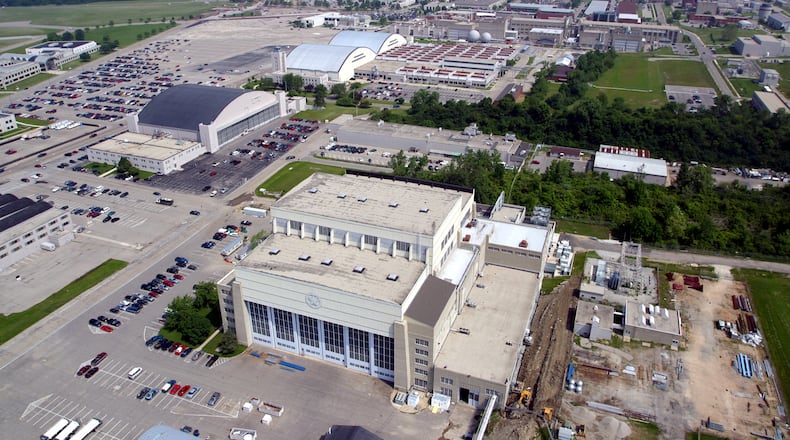While the forum has been held in the state’s capital since its inception in 2016, leaders said they believe the events should be in Dayton from this point forward.
“The opportunities in Dayton would let us grow to the next level,” U.S. Rep. Turner said Monday.
No Dayton location has been identified yet, but Turner, R-Dayton, believes “scattered” events for panels and speeches are a possibility.
“The mission of protecting our nation is no small task with threats growing on the horizon,” Turner said. “Thanks to the commitment, the dedication, and the partnership of those in this room, the state of Ohio is leading the charge in preparing our military and intelligence community with the capabilities it needs to defend our country.”
The one-and-a-half-day event helps ensure a cohesive message across the state on strategies to protect the defense sector, advocates say.
Defense is a huge economic engine for the Dayton area. Wright-Patterson Air Force Base is the biggest single-site employer in the state of Ohio, with more than 30,000 military and civilian employees. The base and its major missions — the Air Force Material Command (AFMC), the Air Force Life Cycle Management Center (AFLCMC), Air Force Research Laboratory (AFRL), among others — attract a good number of defense-oriented contractors and suppliers to the area.
In 2021, military and federal jobs made up 17% of Ohio’s economy, translating to nearly 100,000 jobs in the Dayton area and a $19 billion economic impact in the Miami Valley.
Across the state, Ohio has 10 military installations, including the Springfield Air National Guard Base.
“One place where we are seeing advancements in our technologies and defense capabilities is at the newly established National Space Intelligence Center at Wright-Patterson,” Turner said. “This new center, right here in Ohio, is the primary source for foreign air and space threat analysis.”
Retired Gen. T. Michael “Buzz” Moseley, the 18th Air Force chief of staff, said in the event’s keynote address that the world is increasingly dangerous, with threats from nation-states like China, North Korea, Russia and “trans-national criminals” posing threats in international airspace, cyberspace, outer space and on the seas. “It’s not getting safer at all,” he said.
Chinese systems pose a particular threat in space, to satellites and manned systems, he said.
“From my perspective, Ohio is far and away leading the pack as far as national security” and supporting the national security infrastructure, Moseley said.
But he pointed to what he believes are “real challenges.” He said the Air Force fleet is the “oldest” it has ever been, and attention needs to be paid to “recapitalization” of munitions stockpiles. He observed that the Air Force still operates an air refueling taker that was first designed and built in the mid-1950s.
A revisit to national defense and national security policies should be considered, and the Department of Defense budget “should be baselined on something that looks like 5% of GDP (gross domestic product),” he said.
Today, defense spending is closer to about 3.3% of national GDP.
Lt. Gen. Carl Schaefer, deputy commander of AFMC, said in a panel on defense priorities that the Air Force is designed to counter threats “20 years in the future.”
That includes the U.S. nuclear force and operating commands that are focused on acquisition needs. “We are laser-focused on getting after these capabilities,” Schaefer said.
Maj. Gen. John Harris, Ohio adjutant general, said a “dwindling talent base” is among his biggest challenges. “We can’t grow and train cyber-professionals fast enough,” Harris said.
Capt. Eric Doucette, chief of staff for the U.S. Coast Guard’s 9th District, echoed that, saying the Coast Guard is trying to find and retain the right people at a time when demand for Coast Guard protection is growing.
“The demand for our services is exhausting,” Doucette said.
Schaefer also agreed. “You really need the people and the STEM-educated leaders,” he said.
Digital engineering and digital management of materials are also key to the future, the AFMC deputy commander said. “The next war is won by the nation state that best controls data,” he added.
This year’s forum was at the Sheraton Columbus Capitol Square. It’s the first in-person Defense & Aerospace forum since the COVID-19 pandemic’s U.S. impact was first felt in early 2020.
About the Author



